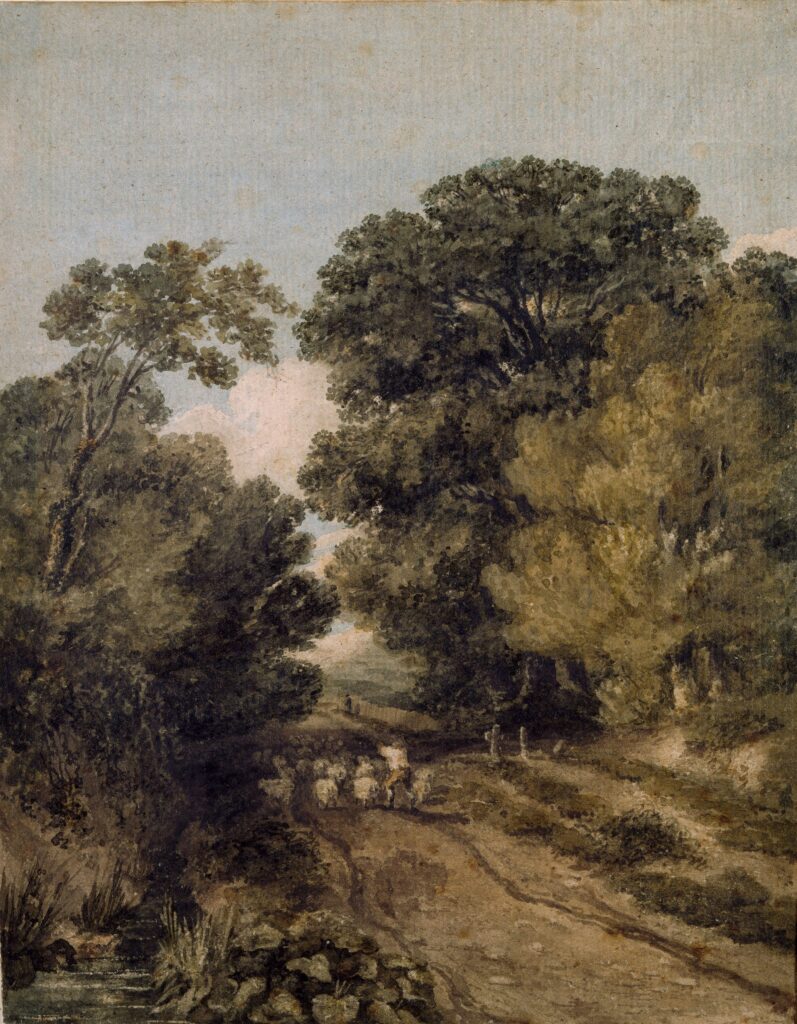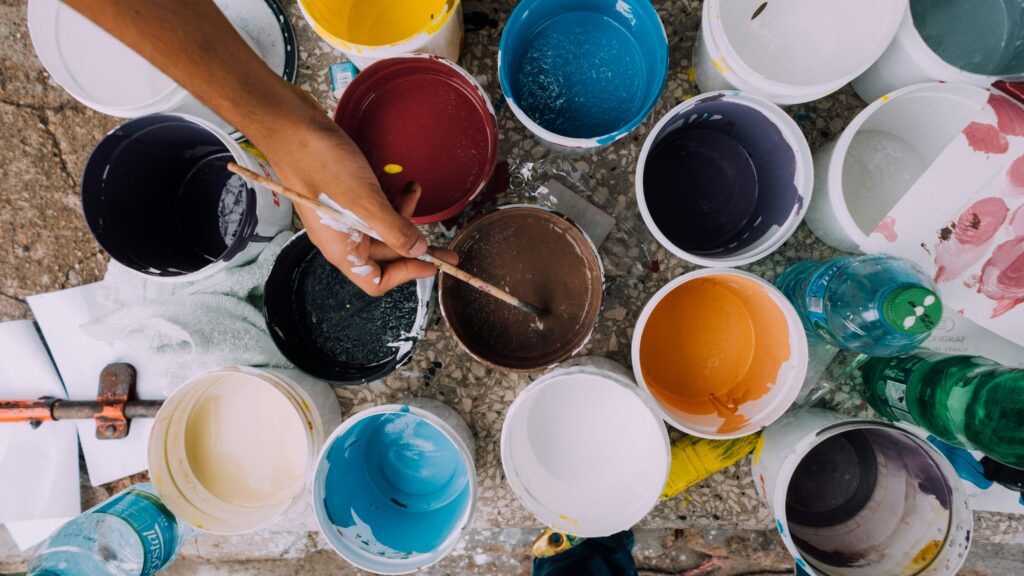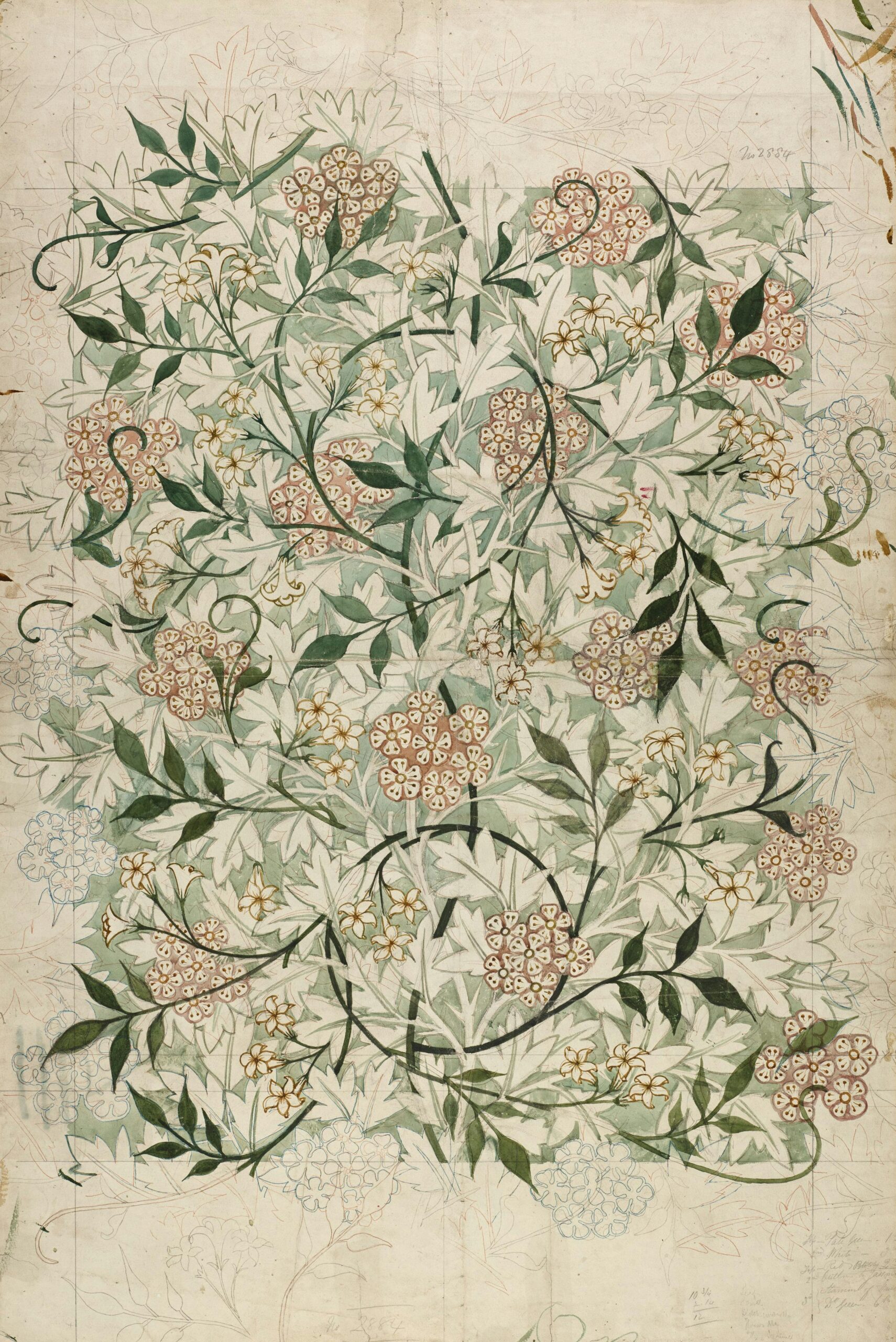In an exciting development for the art world, Jeffrey Gibson, the renowned Choctaw-Cherokee artist, has been selected to bring his sculptures of ancestral spirits to the facade of the Metropolitan Museum of Art. Known for his abstract works that incorporate native and queer themes, Gibson faces the challenge of transforming delicate structures of beadwork, textiles, and paint into weatherproof sculptures that will overlook Fifth Avenue. Commissioned to be on display from September 2025 through May 2026, these sculptures will be accompanied by a roof garden installation by artist Jennie C. Jones. The Met’s choice to feature these two artists together highlights their shared exploration of abstraction and the sonic qualities of their work. This reveals a curatorial program that seeks to engage with issues of identity, place, and consciousness.

Heading 1
Jeffrey Gibson’s honor as the United States representative at the Venice Biennale
Jeffrey Gibson, a Choctaw-Cherokee artist, received the prestigious honor of representing the United States at the Venice Biennale. The Venice Biennale is considered the art world’s Olympics, and Gibson’s selection highlights his talent and significance in the contemporary art scene. This recognition is a testament to Gibson’s unique artistic voice and the compelling themes he explores in his work.
David Breslin’s invitation to Gibson to alter the Met’s facade with sculptures
Following his selection for the Venice Biennale, Gibson received another remarkable opportunity. David Breslin, the curator at the Metropolitan Museum of Art, invited Gibson to create newly commissioned sculptures to alter the facade of the museum. This invitation acknowledges Gibson’s exceptional artistic abilities and the captivating impact he has on viewers through his artwork. Gibson’s sculptures will add a dynamic and thought-provoking presence to the Met’s exterior, further enhancing the museum’s reputation as a hub of contemporary art.
Gibson’s artistic style of infusing abstract works with queer and native themes
Jeffrey Gibson’s art is characterized by his unique blend of abstract aesthetics and his exploration of queer and native themes. Through his work, Gibson defies traditional boundaries and challenges conventional norms. His ability to seamlessly merge abstract forms with cultural and personal narratives creates a rich and complex visual language. Gibson’s art not only captivates viewers with its visual beauty but also prompts meaningful conversations about identity, diversity, and the intersections of different cultures.
Heading 2
Gibson’s challenge of translating delicate structures of beadwork, textiles, and paint into weatherproof sculptures
One of the main challenges Gibson faces in creating the sculptures for the Met’s facade is translating the delicate structures of beadwork, textiles, and paint into weatherproof sculptures. The intricate and delicate nature of these materials requires innovative solutions to ensure their longevity in outdoor conditions while preserving their tactile qualities. Finding the right materials and techniques to strike a balance between durability and artistic integrity is crucial in this monumental task.
The selection of four ancestral spirit figures for the Met facade
For the Met facade commission, Gibson will revisit his ancestral spirit figures, which he first started assembling in 2015. These figures hold deep cultural and personal meaning for the artist, representing a connection to his Indigenous heritage. By displaying these ancestral spirits on the exterior of the Met, Gibson brings attention to the importance of honoring and preserving ancestral wisdom and traditions.
The exhibition dates of September 2025 to May 2026
The sculptures created by Jeffrey Gibson for the Met’s facade will be on display from September 2025 to May 2026. This extended exhibition period allows visitors to engage with and contemplate Gibson’s artwork over an extended timeframe. By integrating public art into the museum’s exterior, the Met offers a unique experience that bridges the boundaries between indoor and outdoor spaces.

Heading 3
Breslin’s praise for Gibson as one of the most incredible artists of his generation
David Breslin, the curator at the Met, has expressed his admiration for Jeffrey Gibson as one of the most incredible artists of his generation. As a curator dedicated to promoting contemporary art, Breslin recognizes the significant impact Gibson’s art has on viewers, as well as the art world at large. Gibson’s talent, creativity, and ability to push boundaries make him a standout artist in the contemporary art scene.
Gibson’s previous sculpture, ‘Can’t Take My Eyes Off of You’
One of Gibson’s notable previous sculptures is titled ‘Can’t Take My Eyes Off of You.’ This sculpture, created in 2015, is an ancestral spirit figure made from glazed ceramic, repurposed tipi poles, artificial sinew, and copper jingles. Through this artwork, Gibson showcases his mastery of materiality and his talent for merging traditional and contemporary elements. ‘Can’t Take My Eyes Off of You’ represents a significant milestone in Gibson’s artistic journey and serves as a precursor to the sculptures he will create for the Met’s facade.
Exploration of Gibson’s Indigenous heritage, abstraction, and popular cultures
Jeffrey Gibson’s art serves as a platform for exploring multiple themes, including his Indigenous heritage, abstraction, and popular cultures. His artwork weaves together these diverse influences, offering a unique perspective on identity, history, and contemporary society. By blending traditional Indigenous aesthetics with abstract forms and popular culture references, Gibson challenges conventional notions of art and culture, creating a space for dialogue and reflection.
Heading 4
Jennie C. Jones as the final roof garden commission before renovation
Jennie C. Jones has been selected as the final artist for the roof garden commission before the terrace undergoes renovation as part of the Met’s construction of the Tang Wing complex. Jones’s inclusion in this prestigious commission highlights her talent and artistic vision. As the final artist to showcase their work on the current roof garden, Jones brings a unique perspective and creative energy to the space.
The Tang Wing complex and its planned galleries
The Tang Wing complex at the Metropolitan Museum of Art is a $500 million project that includes plans for 80,000 square feet of galleries reaching five stories into the sky. This ambitious expansion aims to provide a state-of-the-art space for showcasing art and accommodating the growing needs of the museum. The roof garden commission by Jennie C. Jones serves as a significant artistic component within this larger architectural undertaking.
Jones’ exploration of acoustic sound, minimalist art, and the history of the Black avant-garde
Jennie C. Jones’s artistic practice centers around the exploration of acoustic sound, minimalist art, and the history of the Black avant-garde. Her work delves into the relationship between visual art and sound, creating immersive experiences that engage multiple senses. Jones’s focus on the history of the Black avant-garde adds depth and context to her artistic creations, highlighting the contributions of Black artists and intellectuals throughout history.

Heading 5
The roof garden exhibition dates of April 15, 2025, to October 19, 2025
Jennie C. Jones’s roof garden exhibition will be on view from April 15, 2025, to October 19, 2025. During this period, visitors to the Met will have the opportunity to experience Jones’s immersive and thought-provoking artwork. The specific dates of the exhibition allow for a focused and concentrated engagement with Jones’s artistic vision, providing a unique and memorable experience for museum visitors.
Jones’ recent exhibition at the Guggenheim Museum
Prior to her roof garden commission at the Met, Jennie C. Jones held a notable exhibition at the Guggenheim Museum in 2022. This exhibition showcased Jones’s talent for creating captivating visual and auditory experiences. Her use of canvases with red and yellow streaks, evoking acoustic reverberations, offered visitors a unique perspective on the relationship between art, sound, and space. The exhibition served as a further testament to Jones’s relevance and impact in the contemporary art world.
The use of canvases with red and yellow streaks to evoke acoustic reverberations
Jennie C. Jones’s exploration of the relationship between art and sound extends to her use of canvases with red and yellow streaks. These streaks evoke the acoustic reverberations commonly experienced in spaces such as concert halls or galleries with specific architectural features. Through this visual representation of sound, Jones invites viewers to consider the transformative power of art and the ways in which it can alter our perception of physical spaces.
Heading 6
Breslin’s recognition of the strong curatorial program aligning Gibson and Jones
David Breslin, the curator at the Met, recognizes the strong curatorial program that aligns Jeffrey Gibson and Jennie C. Jones. By showcasing their work in close proximity, Breslin aims to highlight the shared elements of abstraction and sonic quality present in their respective artistic practices. This intentional curatorial decision fosters a dialogue between the two artists and encourages viewers to explore the connections and divergences in their artworks.
The shared elements of abstraction and sonic quality in their works
Both Jeffrey Gibson and Jennie C. Jones incorporate elements of abstraction and sonic quality in their artworks. The interplay between visual aesthetics and auditory experiences serves as a connective thread between their artistic practices. This shared approach enables viewers to engage with their artwork on multiple sensory levels, creating a more immersive and impactful experience.
The focus on issues of identity, place, and consciousness
Identity, place, and consciousness emerge as focal points in the artworks of Jeffrey Gibson and Jennie C. Jones. Both artists explore these themes through their diverse cultural backgrounds and personal experiences. By delving into questions of identity and the complex interplay between individual and collective consciousness, Gibson and Jones offer viewers an opportunity for introspection and an exploration of their own sense of self within the broader social and cultural contexts.

Heading 7
Gibson’s ability to balance work on the Venice Biennale and the Met commission
Jeffrey Gibson demonstrates his ability to balance his commitments to both the Venice Biennale and the Met commission. Despite the demands of these prestigious projects, Gibson manages to dedicate time and energy to each endeavor. His meticulous planning and efficient studio practices allow him to complete his artworks for the Italian exhibition while actively developing programming around the show and creating sculptures for the Met’s facade.
Shipment of artworks for the Italian exhibition
Artworks created by Jeffrey Gibson for the Venice Biennale have been shipped to Italy in preparation for the exhibition. This significant step marks the culmination of meticulous craftsmanship and artistic vision. The artworks will serve as a representation of Gibson’s talent and creativity on the international stage and contribute to the cultural dialogue fostered by the Venice Biennale.
Continued development of programming around the show
While Gibson’s artworks have been shipped to Italy for the Venice Biennale, his studio remains a hub of activity as he continues to develop programming around the show. This programming aims to enhance the viewers’ understanding and engagement with Gibson’s artwork, allowing for a deeper appreciation of his artistic practice and the themes he explores. By creating a comprehensive experience for viewers, Gibson ensures that his artwork resonates and leaves a lasting impact.
Heading 8
Working with engineers to find materials for weatherproof sculptures
Creating weatherproof sculptures for the Met’s facade presents unique challenges that require collaboration with engineers. Jeffrey Gibson is working closely with experts in the field to identify and source materials that will withstand outdoor conditions while retaining the tactile quality crucial to his artwork. This collaboration ensures the longevity of Gibson’s sculptures and the preservation of their aesthetic and conceptual integrity in a demanding outdoor setting.
Maintaining the tactile quality while creating outdoor sculptures
One of Gibson’s key considerations when creating outdoor sculptures is maintaining the tactile quality that is integral to his artistry. The ability to interact physically with the artwork allows viewers to have a deeper connection with the piece and enhances the overall experience. By working closely with engineers and materials experts, Gibson navigates the challenges of creating outdoor sculptures while preserving the tactile qualities that make his artwork so captivating.
The challenge of adapting delicate structures to withstand outdoor conditions
Translating delicate structures of beadwork, textiles, and paint into weatherproof sculptures presents a significant challenge for Jeffrey Gibson. The inherent fragility of these materials must be carefully balanced with the need for durability and resistance to outdoor elements. Gibson’s dedication to quality craftsmanship and his collaboration with experts in the field contribute to finding innovative solutions that address this challenge. The resulting sculptures will capture the essence of Gibson’s artwork while withstanding the test of time in an outdoor environment.

Heading 9
The high-profile opportunities for Gibson amidst a time of mourning
Jeffrey Gibson’s recent high-profile opportunities come at a bittersweet moment, as he navigates his career amidst a time of mourning. In January, his gallerist, Brent Sikkema, was tragically murdered in Rio de Janeiro. This devastating loss adds a layer of complexity to Gibson’s journey, highlighting the resilience and strength required to navigate personal and professional challenges simultaneously.
The murder of Gibson’s gallerist Brent Sikkema
The murder of Brent Sikkema, Jeffrey Gibson’s gallerist, shocked the art world and left Gibson mourning the loss of a dear friend and supporter. Sikkema’s tragic death serves as a stark reminder of the vulnerability of individuals within the art community and the need for continued advocacy for safety and security. Gibson’s ability to navigate this difficult period while maintaining his artistic ambitions demonstrates his resilience and commitment to his craft.
Brazilian authorities’ investigation and arrest warrant for Daniel Sikkema
Following the murder of Brent Sikkema, Brazilian authorities have been conducting an investigation into the circumstances surrounding his death. This ongoing investigation aims to bring justice and closure to the tragic event. Recent developments include an arrest warrant for Daniel Sikkema, the dealer’s husband. It is crucial to allow the investigation to proceed and for the legal process to take its course in order to ascertain the truth and deliver justice.
Heading 10
Gibson’s close relationship with Brent Sikkema
Jeffrey Gibson’s professional relationship with Brent Sikkema extends far beyond the typical artist-gallerist dynamic. Through years of collaboration and friendship, Gibson and Sikkema formed a close bond that allowed them to navigate the art world together. Sikkema’s unwavering support and genuine care for Gibson’s well-being left a lasting impression on the artist, making his tragic loss even more profound.
Importance of sharing personal and professional experiences
The relationship between an artist and their gallerist often extends beyond the realm of business. The shared experiences, personal interactions, and genuine care form the foundation of a successful partnership. Jeffrey Gibson’s close relationship with Brent Sikkema highlights the importance of fostering meaningful connections within the art community and the profound impact these relationships can have on artistic careers.
Gibson’s memories of Sikkema’s caring nature
Jeffrey Gibson’s memories of Brent Sikkema are imbued with warmth and appreciation for the gallerist’s caring nature. Sikkema’s support extended beyond the realm of art, encompassing aspects of personal life and well-being. Gibson fondly remembers Sikkema’s kindness and the genuine interest he took in various aspects of life, from parenting to living in New York City. These memories serve as a testament to the profound impact Sikkema had on Gibson’s life and artistic journey, making his loss all the more profound.

